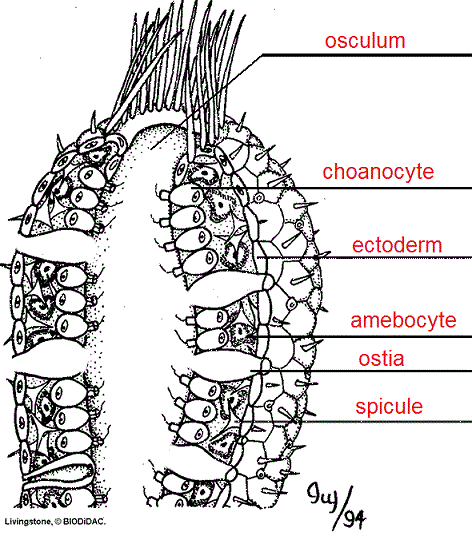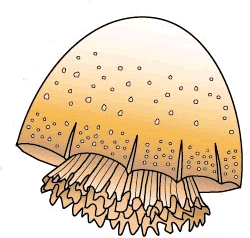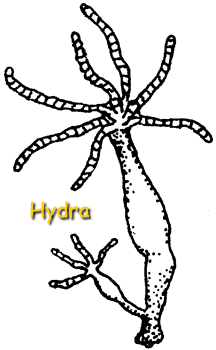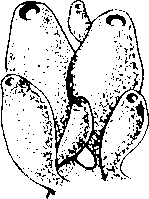Sponges - Kingdom Animalia, Phylum Porifera

Characteristics of Sponges
· Simplest animals, multicellular
· No organs or body systems
· Cellular digestion
· Asymmetry
· Filter Feeders· Sessile (do not move)
· Reproduce sexually (sperm and eggs)
· Reproduce asexually (regeneration)
· Skeleton composed of spongin (soft) and spicules (hard)
Sponge Anatomy

Student Activity: Color a Sponge
Amebocytes - cells within the sponge that move around supplying nutrients and taking away waste
Choanocytes (collar cells)

· layer of cells with flagella
· the movement of the flagella keeps a water current going in the
sponge
· food vacuoles in the collar cells digest plankton and other small
organisms (filter feeder)
Oscula - large opening at top
of sponge, water exits
Ostia - small openings at the side, water enters
Cnidarians
Kingdom Animalia
Phylum Cnidaria
Examples: Jellyfish, hydra, sea anemone, coral, portuguese man of war
Characteristics of Cnidarians
· Tentacles
· Cnidocytes (stinging cells)
· Nematocysts (barbs)
· Gastrovascular cavity (digestion)
· Most are radial symmetry, some have asymmetry (corals)
Cnidarians have two body forms
Medusa - swimming, cup-shaped

Examples: jellyfish, portuguese man of war
Polyp - stationary, vase-shaped

Examples: hydra, coral, sea anemone
Other Resources
Hydra Anatomy – hydra image; students label tentacles, cnidocytes, buds…
Hydra Lab – view a living hydra and observe its behavior
Hydra and Other Cnidarians – article with questions

